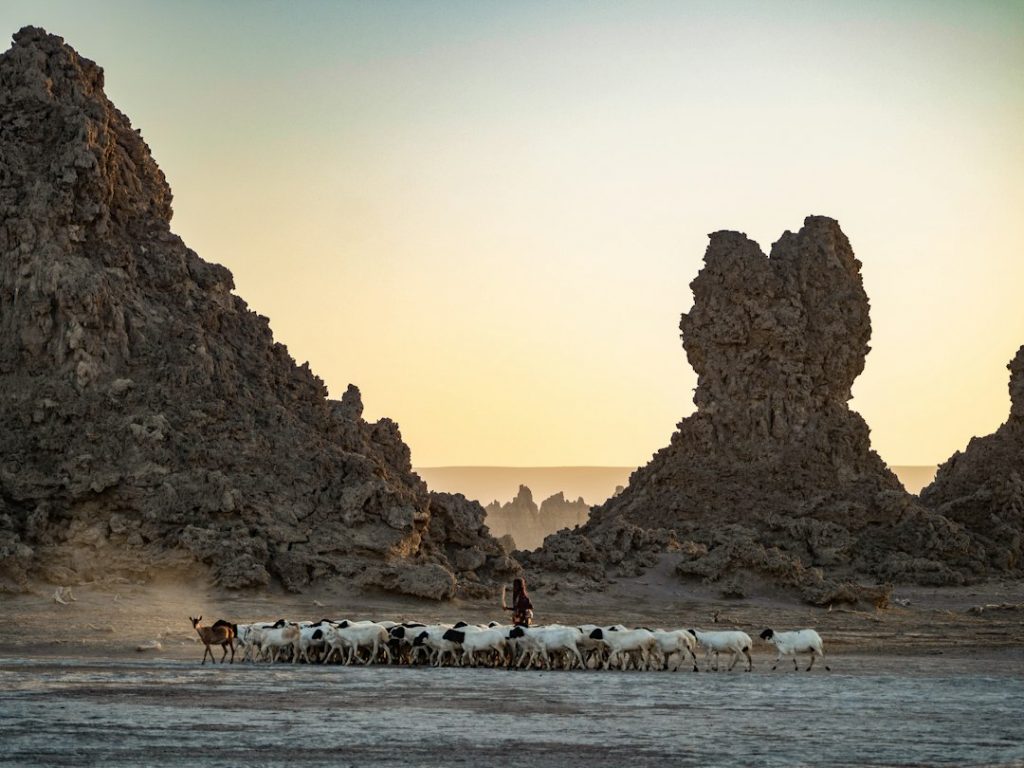Djibouti
(Jumhūrīyah Jībūtī (Arabic); République de Djibouti (French) (Republic of Djibouti))


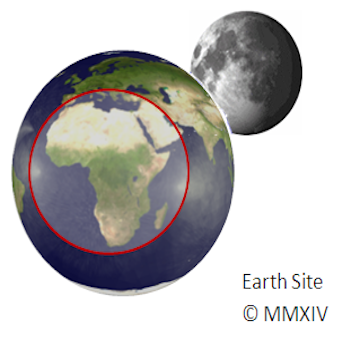

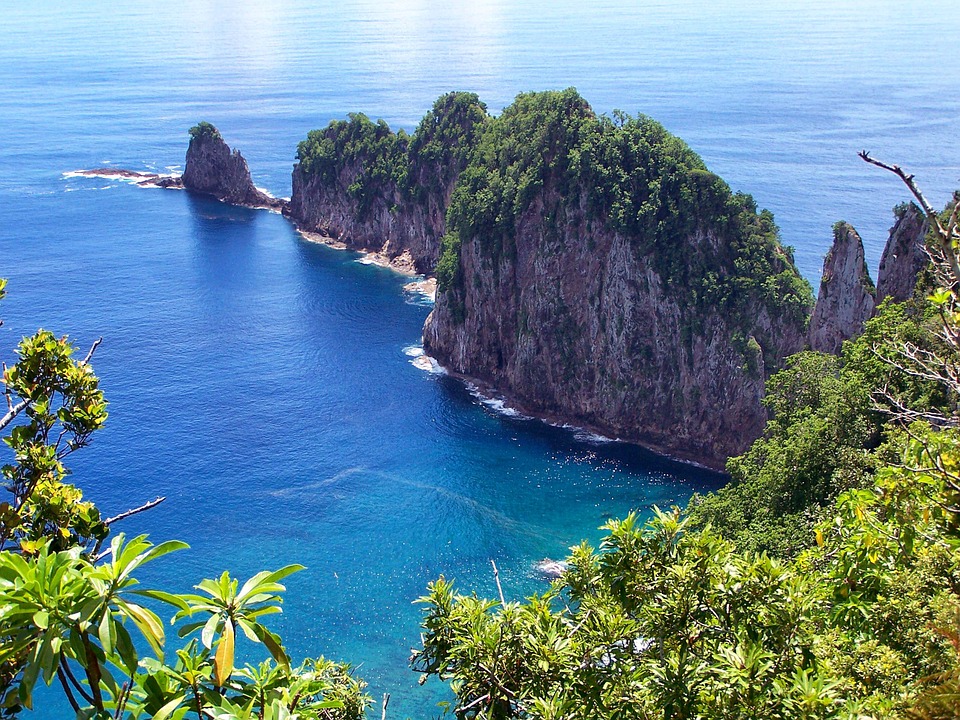
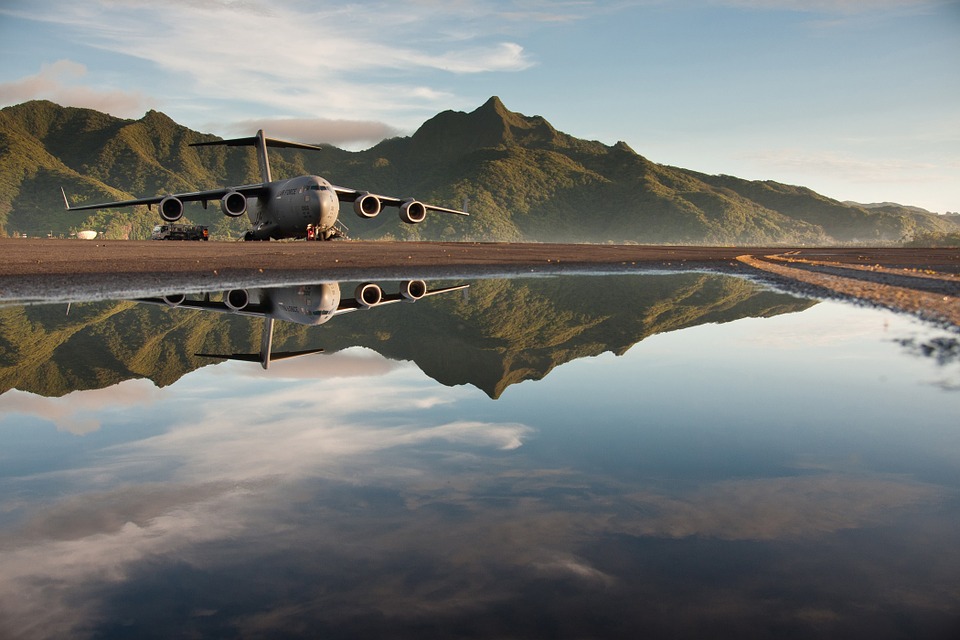
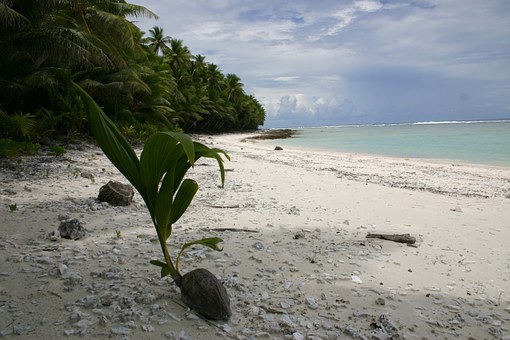

Capital: Djibouti
Population (Estimated July 2012): 774,389
Area: 23,200 km2 or 8,950 mi2
Currency: Djibouti Franc (FDJ)
Official Language: Arabic and French
Political Information: Semi-Presidential Republic
Official Religion: Islam
(approximately 94% of the population are Muslim and 6% are Christian)
Highest Mountain: Moussa Ali at 2,028m or 6,654ft
GDP Official Exchange Rate (OER is more precise at gauging a countries economic power)
(Estimated 2011): $1.3 billion (US$) or (GBP)
GDP (OER) Per Capita (per member of the population estimated 2011): (US$) or (GBP)
GDP Purchasing Power Parity (PPP is good for gauging living conditions and use of resources but not as accurate as OER. This data has been calculated based on the sum value of all goods and services produced in the country valued at prices prevailing in the United States)
(Estimated 2011): $2.244 billion (US$) or (GBP)
Time Zone (GMT/UTC): +3:00
Wildlife:
Counties/Provinces/States: 6 districts (cercles, singular – cercle); Ali Sabieh, Arta, Dikhil, Djibouti, Obock, Tadjourah
Leaders: President Ismail Omar Guelleh with Dileita Mohamed Dileita as Prime Minister.
Additional: Gained Independence from France on the 27th of June 1977.
Sources: CIA World Fact Book, Encyclopaedia Britannica.
Djibouti
Djibouti, officially known as the Republic of Djibouti, is a small country located in the Horn of Africa. It is bordered by Eritrea to the north, Ethiopia to the west and southwest, and Somalia to the southeast. With a land area of approximately 23,200 square kilometres and a population of around one million people, Djibouti is one of the smallest countries in Africa. Despite its size, Djibouti plays a significant role in global trade and transport due to its strategic location at the entrance to the Red Sea and the Gulf of Aden.
Geography and Climate of Djibouti: The Land of Extremes
Djibouti’s geography is characterized by a diverse landscape that includes mountains, deserts, and coastlines. The country is home to the Goda Mountains, which are part of the Ethiopian Highlands and provide a stunning backdrop to the capital city of Djibouti. In addition to mountains, Djibouti is also known for its vast deserts, such as the Grand Bara and Petit Bara deserts, which cover a significant portion of the country.
The climate in Djibouti is harsh and unforgiving, with extreme heat and little rainfall. The country experiences two main seasons: a hot and dry season from May to September, and a cooler season with occasional rainfall from October to April. Average temperatures in Djibouti range from 30°C (86°F) in winter to 41°C (106°F) in summer, making it one of the hottest places on Earth. The lack of rainfall contributes to the arid conditions in Djibouti, with most areas receiving less than 150 millimetres (6 inches) of rain per year.
History of Djibouti: From Ancient Times to Independence
Djibouti has a rich and complex history that dates back thousands of years. The region has been inhabited since prehistoric times, with evidence of early settlements and trade routes dating back to the 25th century BCE. Over the centuries, Djibouti has been influenced by various civilizations, including the Egyptians, Greeks, Romans, and Arabs.
In the late 19th century, Djibouti became a French colony known as French Somaliland. The French established a naval base in Djibouti due to its strategic location along the trade routes between Europe, Asia, and Africa. The colony remained under French control until 1977 when Djibouti gained independence and became the Republic of Djibouti.
Since gaining independence, Djibouti has faced numerous challenges, including regional conflicts and political instability. The country has been involved in conflicts with neighbouring Eritrea and Somalia, as well as internal conflicts between different ethnic groups. Currently, Djibouti is governed by a semi-presidential system and is considered one of the more stable countries in the region.
Culture and Society of Djibouti: A Blend of African and Arab Influences
Djibouti’s culture is a unique blend of African and Arab influences, reflecting its location at the crossroads of Africa, the Middle East, and Asia. The country is home to two main ethnic groups: the Somali people, who make up the majority of the population, and the Afar people, who live primarily in the northern part of the country.
The Somali culture is deeply rooted in nomadic traditions and is known for its vibrant music, dance, and poetry. Traditional Somali music often features instruments such as the oud (a stringed instrument) and the darbuka (a type of drum). Somali cuisine is also popular in Djibouti, with dishes such as canjeero (a type of pancake) and suqaar (a meat dish) being commonly consumed.
The Afar culture, on the other hand, is known for its pastoral lifestyle and its unique language, which is part of the Cushitic language family. The Afar people are skilled herders and traders, and their culture revolves around the importance of livestock and the desert environment.
Religion plays a significant role in Djibouti’s society, with Islam being the dominant religion. The majority of the population is Sunni Muslim, and Islamic customs and traditions are deeply ingrained in everyday life. Mosques are a common sight throughout the country, and religious festivals such as Eid al-Fitr and Eid al-Adha are widely celebrated.
Languages of Djibouti: French, Arabic, Somali and Afar
Djibouti is a multilingual country with several languages spoken throughout the country. The official languages are French and Arabic, reflecting Djibouti’s colonial history and its ties to the Arab world. French is widely spoken in government, business, and education, while Arabic is primarily used in religious contexts.
In addition to French and Arabic, Somali and Afar are also widely spoken in Djibouti. Somali is the most widely spoken language in the country, as it is the mother tongue of the majority of the population. Afar is primarily spoken by the Afar ethnic group in the northern part of Djibouti.
The use of different languages in Djibouti reflects the country’s diverse cultural heritage and its position as a melting pot of different ethnic groups. Language plays an important role in Djibouti’s society and politics, with different languages often used to express cultural identity and assert political power.
Economy of Djibouti: A Strategic Hub for Trade and Transport
Djibouti’s economy is heavily reliant on its strategic location as a hub for trade and transport. The country’s ports, including the Port of Djibouti and the Doraleh Container Terminal, are among the busiest in Africa and serve as major gateways for goods entering and leaving the region. Djibouti’s ports are crucial for landlocked countries in the region, such as Ethiopia and South Sudan, as they provide access to international markets.
In recent years, Djibouti has also invested heavily in infrastructure development, including the construction of new ports, railways, and airports. These investments have been made possible through partnerships with other countries and organizations, such as China and the African Development Bank. The development of infrastructure has not only improved Djibouti’s connectivity but has also created jobs and stimulated economic growth.
In addition to trade and transport, Djibouti’s economy is also supported by other sectors such as agriculture, fishing, and tourism. The country has a small agricultural sector that produces crops such as fruits, vegetables, and qat (a stimulant plant). Fishing is also an important industry in Djibouti, with the country’s coastline providing a rich source of seafood.
Tourism in Djibouti: Discovering the Natural Wonders of the Horn of Africa
Djibouti’s natural attractions make it an emerging destination for tourists seeking unique experiences. The country is home to stunning beaches along its coastline, such as the popular Ghoubbet Bay and Tadjoura Beach. These beaches offer opportunities for swimming, snorkelling, and sunbathing.
Djibouti is also known for its diverse wildlife, including rare species such as the Somali ostrich and the Grevy’s zebra. The Day Forest National Park is a popular destination for nature lovers, with its lush vegetation and abundant birdlife. In addition to wildlife, Djibouti is home to unique geological features, such as the Ardoukoba volcano and the Lake Assal, which is the lowest point in Africa and one of the saltiest lakes in the world.
Despite its natural beauty, Djibouti faces challenges in developing its tourism industry. Limited infrastructure, including hotels and transportation, can make it difficult for tourists to access remote areas. However, the government of Djibouti has recognized the potential of tourism and has taken steps to promote the country as a tourist destination. Investments in infrastructure and marketing campaigns have helped to attract more visitors to Djibouti in recent years.
Food and Drink of Djibouti: A Culinary Fusion of East African and Middle Eastern Flavours
Djiboutian cuisine is a fusion of East African and Middle Eastern flavours, reflecting the country’s cultural diversity and its location at the crossroads of different culinary traditions. The cuisine is known for its use of spices, meats, and grains, which are staples in Djiboutian cooking.
One of the most popular dishes in Djibouti is called “lahoh,” which is a type of pancake made from fermented dough. Lahoh is often served with a variety of toppings, such as honey, butter, or meat. Another popular dish is “skoudehkaris,” which is a meat and rice dish flavoured with spices such as cumin, cardamom, and turmeric.
In addition to traditional dishes, Djibouti also offers a wide range of seafood due to its proximity to the Red Sea. Grilled fish, shrimp, and lobster are commonly found on menus in coastal areas. The country also produces its own coffee, which is often served in traditional ceremonies and is known for its strong flavour.
Food plays an important role in Djiboutian society and culture. Meals are often shared with family and friends, and hospitality is highly valued. Traditional ceremonies, such as weddings and religious festivals, often involve the preparation and sharing of large feasts.
Sports and Recreation in Djibouti: From Football to Scuba Diving
Sports and recreational activities play an important role in Djiboutian society, providing opportunities for physical fitness, social interaction, and national pride. Football (soccer) is the most popular sport in Djibouti, with the national team representing the country in international competitions. The country also has a national basketball team that competes in regional tournaments.
Djibouti’s coastal location makes it an ideal destination for water sports and activities. Scuba diving and snorkeling are popular among tourists and locals alike, with the opportunity to explore the diverse marine life and coral reefs of the Red Sea. Fishing is also a popular recreational activity, with many locals enjoying the thrill of catching their own seafood.
In addition to traditional sports, Djibouti also has a strong tradition of camel racing. Camel racing is a popular sport in many Arab countries and involves racing camels across a track. The sport attracts large crowds and is often accompanied by traditional music and celebrations.
Sports and recreational activities are not only a source of entertainment but also play a role in promoting national unity and pride. The success of Djiboutian athletes in international competitions has helped to raise the profile of the country and inspire future generations.
Challenges and Opportunities for Djibouti: Navigating the Future in a Complex Region
Djibouti faces several challenges as it navigates its future in a complex region. Political instability in neighbouring countries, such as Somalia and Yemen, poses a threat to Djibouti’s security and stability. The country has also faced criticism for its human rights record, including allegations of political repression and restrictions on freedom of speech.
Environmental concerns are another challenge for Djibouti, as the country is vulnerable to climate change and desertification. Rising sea levels and increased temperatures can have a significant impact on Djibouti’s coastal areas and agricultural sector. The government of Djibouti has recognized the importance of addressing these challenges and has taken steps to promote sustainable development and environmental conservation.
Despite these challenges, Djibouti also has significant opportunities for growth and development. Its strategic location at the entrance to the Red Sea and the Gulf of Aden makes it a key player in global trade and transport. The country’s ports and infrastructure investments have attracted international partners, such as China, who see Djibouti as a gateway to Africa.
Djibouti’s tourism industry also has great potential for growth, with its natural attractions and unique cultural heritage. Investments in infrastructure and marketing campaigns have helped to attract more visitors to Djibouti in recent years, and the government is committed to further developing the sector.
In conclusion, Djibouti is a small nation with big ambitions. Despite its size, Djibouti plays a significant role in global trade and transport due to its strategic location. The country’s diverse geography, rich history, and unique cultural heritage make it an intriguing destination for travellers. However, Djibouti also faces challenges such as political instability and environmental concerns. By addressing these challenges and capitalizing on its opportunities, Djibouti can navigate a prosperous future in a complex region.
FAQs
What is Djibouti?
Djibouti is a small country located in the Horn of Africa. It is bordered by Eritrea to the north, Ethiopia to the west and south, and Somalia to the southeast.
What is the capital city of Djibouti?
The capital city of Djibouti is also called Djibouti.
What is the population of Djibouti?
As of 2021, the estimated population of Djibouti is around 1 million people.
What is the official language of Djibouti?
The official languages of Djibouti are French and Arabic, although Somali and Afar are also widely spoken.
What is the currency of Djibouti?
The currency of Djibouti is the Djiboutian franc (DJF).
What is the climate like in Djibouti?
Djibouti has a hot and arid climate, with very little rainfall. Temperatures can reach up to 45°C (113°F) in the summer months.
What are the main industries in Djibouti?
The main industries in Djibouti are port services, transportation, and telecommunications. The country is strategically located at the entrance to the Red Sea, making it an important hub for trade between Africa, the Middle East, and Asia.
What are some popular tourist attractions in Djibouti?
Some popular tourist attractions in Djibouti include Lake Assal, the Day Forest National Park, and the beaches along the Gulf of Tadjoura. The country is also known for its unique wildlife, including the Somali ostrich and the Djibouti francolin.
Climate Zones Of Djibouti: Different climate regions Of Djibouti
Djibouti, located in the Horn of Africa, is a small country with a diverse range of climate zones. Its geography is characterized by rugged mountains, arid deserts, and a coastline along the Red Sea. Understanding Djibouti’s climate zones is crucial for various reasons, including agriculture, tourism, and conservation efforts. Each climate zone has its own unique characteristics, which influence the vegetation, wildlife, and human settlements found in the region. Summary Djibouti has five main climate zones: equatorial, semi-arid, arid, coastal, and mountainous. The equatorial region experiences high temperatures and rainfall throughout the year. The semi-arid region has a dry season and a short rainy season, with temperatures ranging from hot to cool. The arid region is extremely dry and hot, with little to no rainfall. The coastal region has a hot and humid climate, with occasional rainfall and strong winds. The Equatorial Climate Region of Djibouti The equatorial climate region in Djibouti is characterized by high temperatures and heavy rainfall throughout the year. The average temperature in this region ranges from 25 to 35 degrees Celsius (77 to 95 degrees Fahrenheit). The rainfall is abundant, with an average of 500 to 1000 millimeters (20 to 40 inches) per year. The equatorial climate zone is home to lush vegetation, including tropical rainforests and savannahs. The forests are filled with a variety of trees such as acacia, baobab, and ebony. These forests provide habitat for a diverse range of wildlife, including elephants, giraffes, lions, and various species of birds. The Semi-Arid Climate Region of Djibouti The semi-arid climate region in Djibouti experiences hot temperatures and low rainfall. The average temperature in...
Political Boundaries of Djibouti: Provinces, Districts, or Historical Boundaries.
Political boundaries are defined as the lines that separate one political entity from another. These boundaries are crucial in governance as they determine the jurisdiction and authority of a particular government over a specific territory. In Djibouti, political boundaries play a significant role in the administration and management of the country. The importance of political boundaries in governance cannot be overstated. They provide a framework for the distribution of power, resources, and responsibilities among different regions or provinces within a country. Political boundaries also help in maintaining law and order, as they define the areas where a particular government has the authority to enforce its laws and regulations. Summary Djibouti is a small country located in the Horn of Africa with a complex political boundary system. The country is divided into six provinces, each with its own governor and administrative structure. Djibouti’s district boundaries have evolved over time, with some districts being merged or split to accommodate changing political and economic needs. The historical boundaries of Djibouti have played a significant role in shaping the country’s identity and political landscape. Political boundaries in Djibouti have a direct impact on the country’s governance, economy, and relationships with neighbouring countries. Overview of Djibouti’s Provinces Djibouti is divided into six provinces, each with its own distinct characteristics and demographics. These provinces are: 1. Djibouti City: This province is the capital and largest city of Djibouti. It is located on the Gulf of Tadjoura and serves as the economic, political, and cultural center of the country. Djibouti City is home to the majority of the population and is known for its bustling port...
History of Djibouti
Djibouti, located in the Horn of Africa, has a rich and diverse history that has shaped its significance in the region. The country has been inhabited for thousands of years, with early settlements dating back to ancient times. Over the centuries, Djibouti has been influenced by various cultures and civilizations, including the arrival of Islam in the 7th century and European colonial powers in the 19th century. Today, Djibouti plays a crucial role in regional security and stability, as well as being a key player in international trade and commerce. Summary Djibouti has a long history of early settlements and the arrival of Islam, which has shaped its culture and society. Colonialism and European influence played a significant role in Djibouti’s history, with the French establishing it as a colony. Djibouti played a crucial role in World War II and the Cold War, serving as a strategic location for military operations. Independence and the formation of the Republic of Djibouti marked a new era for the country, but it faced challenges such as the Ogaden War and political instability. Djibouti’s strategic importance in the Horn of Africa has made it a key player in regional politics and economic development, but it still faces contemporary challenges such as poverty and unemployment. Early Settlements and the Arrival of Islam in Djibouti The first inhabitants of Djibouti were likely nomadic tribes who settled in the region thousands of years ago. These early settlements were primarily focused on agriculture and animal husbandry, with communities living in small villages and practicing subsistence farming. The region’s strategic location along the Red Sea and the Gulf...
Population Density of Djibouti
Djibouti, located in the Horn of Africa, is a small country with a population density that is among the highest in the world. With an area of just 23,200 square kilometers (8,958 square miles), Djibouti is home to approximately 1 million people, resulting in a population density of over 43 people per square kilometer (112 people per square mile). Understanding the factors that contribute to this high population density is crucial for effective planning and development in Djibouti. Summary Djibouti is a small country with a high population density. Population density is the number of people per unit of land area and can be calculated by dividing the total population by the land area. Djibouti’s small land area is a key factor in its high population density. Djibouti’s population density has shifted from nomadic to urban over time. Population density in Djibouti presents both opportunities and challenges for economic development. Understanding Population Density: Definition and Calculation Population density refers to the number of people living in a specific area, usually measured in terms of persons per square kilometer or square mile. It is calculated by dividing the total population of an area by its land area. In the case of Djibouti, the population density is calculated by dividing the country’s population of 1 million by its land area of 23,200 square kilometers. When comparing Djibouti’s population density with other countries, it becomes evident that it is significantly higher than the global average. For example, the global average population density is around 57 people per square kilometer (148 people per square mile), while Djibouti’s population density is over 43 people...
Terrain and Topography of Djibouti: mountains, valleys, and plains.
Djibouti, located in the Horn of Africa, is a small country with a diverse and unique terrain. Its geography is characterized by mountains, valleys, plains, plateaus, and coastal regions. Understanding Djibouti’s terrain and topography is crucial for various reasons, including environmental conservation, infrastructure development, and tourism. This article will provide an in-depth overview of Djibouti’s terrain and topography, highlighting the importance of preserving its unique landscape. Summary Djibouti’s terrain is diverse, with mountainous regions, valleys, plains, coastal areas, and plateaus. The mountainous regions of Djibouti are home to unique flora and fauna, including the endangered Djibouti francolin bird. The valleys of Djibouti are characterized by their steep walls and narrow floors, creating a striking landscape. The plains of Djibouti are vast and open, with sparse vegetation and a harsh climate. Volcanic activity has played a significant role in shaping Djibouti’s topography, with several active and dormant volcanoes in the region. Overview of Djibouti’s Terrain and Topography Djibouti’s landscape is a result of various geological processes that have shaped the region over millions of years. The country is located at the junction of three tectonic plates, which has contributed to its diverse topography. The terrain in Djibouti is characterized by mountains, valleys, plains, plateaus, and coastal regions. The Mountainous Regions of Djibouti Djibouti is home to several mountain ranges, including the Goda Mountains and the Mabla Mountains. These mountains are an important part of Djibouti’s ecosystem as they provide a habitat for a variety of plant and animal species. They also play a crucial role in regulating the climate by influencing wind patterns and rainfall distribution. The Valleys of Djibouti:...
Cultural or Historical Sites of Djibouti: Important Cultural Landmarks or Historical Sites in Djibouti
Djibouti, a small country located in the Horn of Africa, may not be on the top of everyone’s travel list, but it is a hidden gem waiting to be explored. With its rich cultural heritage and stunning natural wonders, Djibouti offers a unique and unforgettable experience for travelers. From ancient cities to salt lakes, from historical landmarks to ecological treasures, Djibouti has something for everyone. In this article, we will take a closer look at some of the must-visit cultural and natural wonders in Djibouti. Summary Tadjourah offers a glimpse into Djibouti’s ancient past Arta Plage combines history and natural beauty in one stunning location The Grand Mosque of Djibouti is a symbol of the country’s Islamic heritage Day Forest National Park is a must-visit for those seeking natural and cultural wonders The Afar Triangle is a geological and cultural marvel that should not be missed The ancient city of Tadjourah: A glimpse into Djibouti’s past Tadjourah, located on the Gulf of Tadjourah, is one of the oldest cities in Djibouti and offers a glimpse into the country’s past. With its narrow streets and traditional architecture, Tadjourah exudes an old-world charm that is hard to resist. The city has a rich history, having been an important trading port for centuries. It was once a major center for the slave trade and served as a hub for merchants from across the region. One of the must-see landmarks in Tadjourah is the Tadjourah Mosque, also known as the Sheikh Ahmed Dini Mosque. This beautiful mosque, built in the 19th century, is made entirely of coral stone and is a testament to...
Natural Resources of Djibouti: Where Natural Resources are Located in Djibouti
Djibouti, located in the Horn of Africa, is a small country with a diverse range of natural resources. Its geography is characterized by rugged mountains, arid deserts, and a coastline along the Red Sea and the Gulf of Aden. Despite its small size, Djibouti possesses significant natural resources that play a crucial role in its economic development. Natural resources are essential for economic growth and development as they provide the raw materials needed for various industries. Djibouti’s natural resources include minerals, petroleum and gas reserves, agriculture, fisheries, water resources, geothermal energy, and wildlife and biodiversity. These resources contribute to the country’s GDP and provide employment opportunities for its population. Summary Djibouti has a variety of natural resources including minerals, petroleum and gas reserves, agriculture, fisheries, water resources, geothermal energy, and wildlife. Djibouti’s mineral resources include gold, copper, and salt, while its petroleum and gas reserves are still being explored. Agriculture is a vital resource in Djibouti, with crops such as fruits, vegetables, and livestock providing food and income for the population. Djibouti’s fisheries are a valuable natural resource, with a variety of fish species found in the Red Sea and Gulf of Aden. Water resources in Djibouti are scarce and precious, with the country relying heavily on groundwater and desalination plants for drinking water. Mineral Resources in Djibouti: A Comprehensive Overview Djibouti is rich in mineral resources, including gold, limestone, marble, granite, gypsum, and clay. The country has been actively exploring and mining these minerals to support its construction and manufacturing industries. The mining sector in Djibouti has attracted foreign investment and has the potential for further development. Exploration...
Discovering the Hidden Gems of Djibouti: A British Traveller’s Guide
Djibouti, located in the Horn of Africa, is a small country that often gets overlooked by travellers. However, this hidden gem is worth exploring for its unique blend of history, culture, and natural beauty. Djibouti has a rich history, with influences from Arab, African, and French cultures. The country’s strategic location on the Red Sea has made it a hub for trade and commerce throughout history. One of the main reasons why Djibouti is a fascinating destination is its diverse landscapes. From stunning beaches to rugged mountains and volcanic formations, Djibouti offers a range of outdoor activities for adventure enthusiasts. The country is also home to several wildlife reserves, where visitors can spot rare species such as the Somali ostrich and the Grevy’s zebra. Summary Djibouti is a hidden gem worth exploring for its unique landscapes and cultural experiences. The best time to visit Djibouti is during the cooler months of November to February. Transportation options to Djibouti include flights and ferries, with visa requirements varying by nationality. Top attractions in Djibouti include the stunning beaches of the Gulf of Tadjoura and the otherworldly landscapes of Lake Assal and Ardoukoba volcano. Cultural experiences in Djibouti include meeting the friendly locals and learning about their traditions, such as the nomadic lifestyle of the Afar people. The Best Time to Visit Djibouti: Seasonal Considerations Djibouti has a hot desert climate, with high temperatures throughout the year. The best time to visit Djibouti is during the cooler months of November to February when temperatures are more bearable for outdoor activities. This is also the peak tourist season, so it’s advisable to book...

















